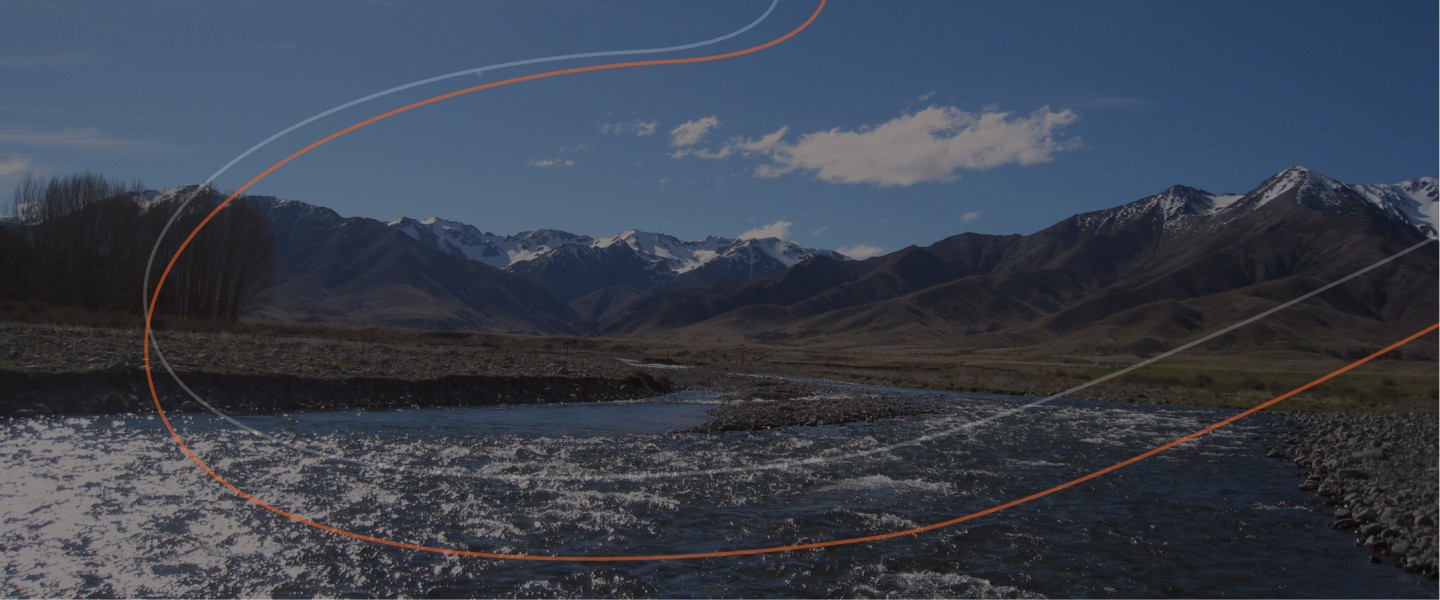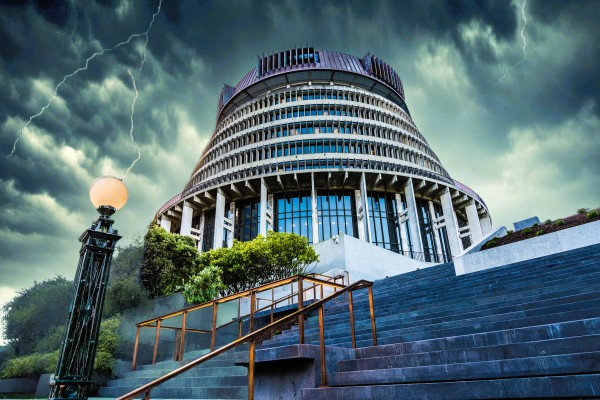References
- Boyd M, Wilson N, Payne B. NZ’s National Security Draft Long-term Insights Briefing (LTIB): Excellent Progress but Scope for Improvement. [Blog]. 2022;(20 November). https://adaptresearchwriting.com/2022/11/20/nzs-national-security-draft-long-term-insights-briefing-ltib-excellent-progress-but-scope-for-improvement/.
- DPMC & MfE. Building New Zealand’s Long-term Resilience to Hazards: Draft Long-term Insights Briefing. Wellington: Department of the Prime Minister and Cabinet (DPMC) and the Ministry for the Environment (MfE), 2025. https://www.dpmc.govt.nz/our-programmes/risk-and-resilience/building-resilience-hazards-long-term-insights-briefing
- Gambhir A, Albert MJ, Doe SS, et al. A systemic risk assessment methodological framework for the global polycrisis. Nature Communications 2025;16(1):7382. https://doi.org/10.1038/s41467-025-62029-w
- Nature. AI and misinformation are supercharging the risk of nuclear war [Editorial]. Nature 2025;(17 July). https://www.nature.com/articles/d41586-025-02271-w
- Karger E, Rosenberg J, Jacobs Z, et al. Forecasting Existential Risks: Evidence from a Long-Run Forecasting Tournament (FRI Working Paper #1): Forecasting Research Institute, 2023. https://tinyurl.com/467f9tbh
- Roose K. A.I. Poses ‘Risk of Extinction,’ Industry Leaders Warn. New York Times 2023;(30 May). https://www.nytimes.com/2023/05/30/technology/ai-threat-warning.html.
- Vermeer M, Lathrop E, Moon A. On the extinction risk from artificial intelligence: Rand, 2025:https://www.rand.org/pubs/research_reports/RRA3034-1.html.
- United Nations. United Nations Global Risk Report 2024. New York: United Nations Publications. https://unglobalriskreport.org/UNHQ-GlobalRiskReport-WEB-FIN.pdf.
- National Academies of Sciences, Engineering, and Medicine. Potential environmental effects of nuclear war. Washington, DC: National Academies Press, 2025. https://doi.org/10.17226/27515
- Panda A. Nuclear-weapons risks are back—and we need to act like it. Nature 2025;644(8076):335-37. https://www.nature.com/articles/d41586-025-02506-w
- Mecklin J. A time of unprecedented danger: It is 90 seconds to midnight. 2023 Doomsday Clock Statement. Bulletin of the Atomic Scientists 2023;(24 January); https://thebulletin.org/doomsday-clock/2023-doomsday-clock-statement/
- Department of the Prime Minister and Cabinet. New Zealand's National Risks (Updated 8 May 2025). https://www.dpmc.govt.nz/our-programmes/risk-and-resilience/national-risk-and-resilience-framework/new-zealands-national-risks
- Boyd M, Payne B, Ragnarsson S, et al. Aotearoa NZ, Global Catastrophe, and Resilience Options: Overcoming Vulnerability to Nuclear War and other Extreme Risks: Report by the Aotearoa NZ. Catastrophe Resilience Project (NZCat) [Report]. Reefton: Adapt Research Ltd, 2023. https://adaptresearch.files.wordpress.com/2023/11/231117-v1-nzcat-resilience-nuclear-gcrs-1.pdf
- Wilson N, Prickett M, Boyd M. Food security during nuclear winter: A preliminary agricultural sector analysis for Aotearoa New Zealand. New Zealand Medical Journal 2023;136(1574):65-81. https://nzmj.org.nz/media/pages/journal/vol-136-no-1574/food-security-during-nuclear-winter-a-preliminary-agricultural-sector-analysis-for-aotearoa-new-zealand/4167598cb0-1696476531/food-security-during-nuclear-winter-a-preliminary-agricultural-sector-analysis-for-aotearoa-new-zealand.pdf
- Wilson N, Payne B, Boyd M. Mathematical optimization of frost resistant crop production to ensure food supply during a nuclear winter catastrophe. Scientific Reports 2023;13(1):8254. https://doi.org/10.1038/s41598-023-35354-7
- Boyd M, Ragnarsson S, Terry S, et al. Mitigating imported fuel dependency in agricultural production: Case study of an island nation's vulnerability to global catastrophic risks. Risk Analysis 2024. https://doiorg/101111/risa14297
- Boyd M, Wilson N. Combining Urban and Peri-Urban Agriculture for Resilience to Global Catastrophic Risks Disrupting Trade: Quantified case study of a median-sized city. PLOS ONE 2025;20(5):e0321203. https://doi.org/10.1371/journal.pone.0321203
- Preddey G, Wilkins P, Wilson N, et al. Nuclear Disaster, A Report to the Commission for the Future. Wellington: Government Printer, 1982. https://www.mcguinnessinstitute.org/wp-content/uploads/2016/11/CFTF-March-1982-Future-Contingencies-4-Nuclear-Disaster-FULL.pdf
- Green W, Cairns T, Wright J. New Zealand After Nuclear War. Wellington: New Zealand Planning Council, 1987.
- Kitchin P. Impacts on health and the health care system in New Zealand [Background Paper 10]. In: New Zealand Planning Council. New Zealand after Nuclear War: The Background Papers. New Zealand Planning Council, 1987. https://www.mcguinnessinstitute.org/wp-content/uploads/2022/11/20221129-BP10.pdf.
- Mani L, Tzachor A, Cole P. Global catastrophic risk from lower magnitude volcanic eruptions. Nature Communications 2021;12:4756. https://doi.org/10.1038/s41467-021-25021-8
- Lin J, Svensson A, Hvidberg CS, et al. Magnitude, frequency and climate forcing of global volcanism during the last glacial period as seen in Greenland and Antarctic ice cores (60–9 ka). Climate of the Past 2022;18(3):485-506. https://doi.org/10.5194/cp-18-485-2022
- Behringer W. Tambora and the Year without a Summer. Cambridge: Polity Press, 2019.
- Brönnimann S, Krämer D. Tambora and the “Year Without a Summer” of 1816. A Perspective on Earth and Human Systems Science. Geographica Bernensia G90, pp48. doi:10.4480/GB2016.G90.01. https://tinyurl.com/2cxy92cd
- Wilson N, Valler V, Cassidy M, et al. Impact of the Tambora volcanic eruption of 1815 on islands and relevance to future sunlight-blocking catastrophes. Scientific Reports 2023;13(1):3649. https://doi.org/10.1038/s41598-023-30729-2
- Willis H, Narayanan A, Boudreaux B, et al. Global Catastrophic Risk Assessment. Rand Corporation, 2024. https://www.rand.org/pubs/research_reports/RRA2981-1.html
- Marani M, Katul GG, Pan WK, et al. Intensity and frequency of extreme novel epidemics. Proceedings of the National Academy of Sciences 2021;118(35):e2105482118. https://doi.org/10.1073/pnas.2105482118
- Wilson N, Boyd M, Potter J, et al. The case for a NZ-Australia Pandemic Cooperation Agreement. The Briefing 2024;(4 November). https://www.phcc.org.nz/briefing/case-nz-australia-pandemic-cooperation-agreement
- Esvelt K. Kevin Esvelt: Mitigating catastrophic biorisks [Presentation]. 2020;(4 September). https://www.effectivealtruism.org/articles/kevin-esvelt-mitigating-catastrophic-biorisks
- Boyd M, Baker MG, Kvalsvig A, et al. Impact of Covid-19 Control Strategies on Health and GDP Growth Outcomes in 193 Sovereign Jurisdictions. medRxiv 2025:2025.04. 08.25325452. https://doi.org/10.1101/2025.04.08.25325452
- Gopal A, Bradshaw W, Sunil V, et al. Securing civilisation against catastrophic pandemics. Geneva: GCSP, 2023. https://www.gcsp.ch/publications/securing-civilisation-against-catastrophic-pandemics
About the Briefing
Public health expert commentary and analysis on the challenges facing Aotearoa New Zealand and evidence-based solutions.
Subscribe

Public Health Expert Briefing
Get the latest insights from the public health research community delivered straight to your inbox for free. Subscribe to stay up to date with the latest research, analysis and commentary from the Public Health Expert Briefing.

